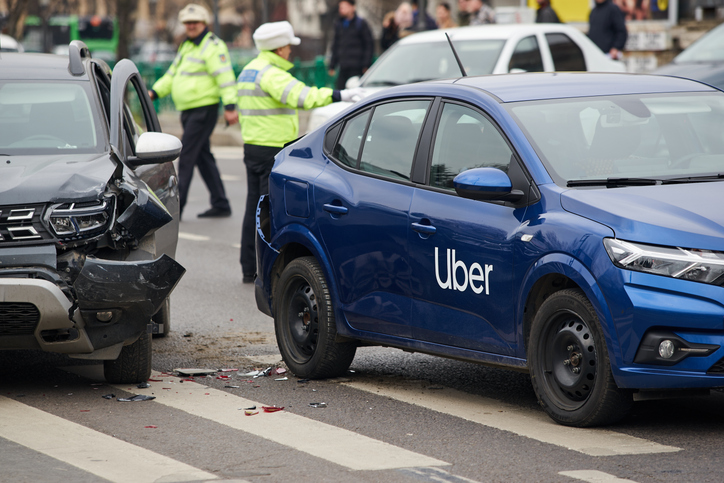Being involved in an Uber accident as a passenger can lead to a wide range of injuries, from minor bruises to life-altering trauma. While rideshare services like Uber provide convenient transportation, accidents involving these vehicles often present unique challenges due to the complex liability and insurance coverage considerations. Understanding the types of injuries commonly sustained in an Uber accident as a passenger and what to expect afterward is crucial for protecting your health and legal rights.
This article explores the physical injuries frequently experienced by passengers in Uber-related crashes and offers insight into the possible medical and legal outcomes following such incidents.
Types of Injuries Commonly Sustained in an Uber Accident as a Passenger
When involved in an accident while riding in an Uber vehicle, passengers are vulnerable to injuries caused by the sudden force of impact, contact with vehicle interiors, and more. The force of the collision can lead to a variety of injuries that vary based on accident severity and position in the vehicle.

Whiplash and Neck Injuries in an Uber Accident as a Passenger
One of the most frequently reported injuries in rideshare crashes is whiplash, a neck injury caused by the rapid back-and-forth motion of the head upon impact. In an Uber accident as a passenger, whiplash occurs especially in rear-end collisions and can result in neck pain, stiffness, headaches, and a reduced range of motion. These symptoms may not appear immediately but can worsen over days or even weeks, requiring medical treatment.
The unexpected jerking motion can also cause soft tissue injuries to muscles and ligaments around the neck, leading to chronic pain if untreated.
Head and Brain Injuries Experienced by Uber Passengers in Accidents
Passengers involved in an Uber crash are vulnerable to head injuries if they hit their head against hard surfaces like windows, dashboards, or seats. These injuries range from mild concussions to severe traumatic brain injuries (TBI). Concussions may cause dizziness, confusion, and prolonged headaches, while more serious brain injuries can lead to cognitive impairments, memory loss, or long-term neurological symptoms.
Using seatbelts can reduce the risk of these injuries, but they do not eliminate the danger entirely, especially in high-impact collisions.
Broken Bones and Fractures in Uber Rideshare Mishaps
Collisions often cause broken bones among passengers in Uber vehicles, especially in the arms, legs, ribs, and pelvis. The impact can exert excessive force on these bones, causing fractures that require immobilization, surgery, or extensive rehabilitation. Side-impact and high-speed crashes commonly result in pelvic fractures, which are serious due to their association with internal organ damage.
Such fractures can severely affect a passenger’s mobility and quality of life while healing.

Back and Spinal Cord Injuries in Uber Vehicle Collisions
Back injuries, including damage to the spinal cord, are some of the most serious consequences of an Uber accident as a passenger. These can include herniated discs, fractured vertebrae, and spinal cord compression, which might cause chronic pain, numbness, or paralysis depending on severity. Spinal cord injuries require specialized treatment and may result in permanent disability.
Passengers suffering from spinal injuries often face long recovery periods and complicated medical interventions.
Chest and Internal Injuries from Uber Rideshare Accidents
The sudden stop or sharp impact during an Uber accident can lead to blunt chest trauma, including bruising, broken ribs, or damage to internal organs such as the lungs, heart, or spleen. Internal injuries are sometimes difficult to detect immediately but can be life-threatening if untreated. Passengers may experience breathing difficulties, severe pain, or internal bleeding, all requiring urgent medical attention.
Wearing a seatbelt decreases some risk but cannot fully prevent these injuries.
Soft Tissue Injuries and Bruises Following an Uber Ride Accident
Soft tissue injuries involve damage to muscles, ligaments, and tendons. These injuries include strains, sprains, contusions, tendonitis, and bursitis. Often underestimated, soft tissue injuries can cause significant pain, swelling, and reduced mobility. Passengers might not feel symptoms immediately after an Uber accident, and these injuries might worsen without proper rest and care.
Ignoring soft tissue injuries can lead to prolonged discomfort and functional limitations.
Psychological Effects Passengers May Endure After Uber Accidents
Beyond physical harm, being in an Uber accident as a passenger can cause psychological trauma such as post-traumatic stress disorder (PTSD), anxiety, or depression. The shock of the accident and the recovery process can affect mental health, requiring emotional support or counseling.
Passengers should monitor their psychological well-being after a crash and seek professional help if symptoms arise.

What to Expect Medically After an Uber Accident as a Passenger
Following an Uber accident as a passenger, immediate medical evaluation is essential even if injuries seem minor. Many injuries, such as whiplash and internal trauma, may manifest symptoms hours or days after the crash. A thorough medical exam can identify hidden injuries and help develop a treatment plan.
Medical documentation is also critical for any future legal claims or insurance processes. Continuous follow-up care, physical therapy, and pain management might be required for recovery depending on the injury type and severity.
Legal Implications and Insurance Coverage for Injured Uber Passengers
Passengers injured in an Uber accident as a passenger are typically covered under Uber’s liability insurance while the driver is engaged in an active ride. This coverage includes up to $1 million in liability protection for bodily injury and property damage. Passengers can pursue compensation for medical bills, lost wages, and other damages through this insurance regardless of fault.
Determining liability, especially if other drivers or parties are involved, can be complicated. Passengers may also claim damages against the driver at fault or even responsible third parties, such as local government authorities if poor road conditions contributed to the accident.
For more detailed legal steps on handling claims after an Uber accident, refer to this guide on what to do after an Uber accident as a passenger.
Conclusion
Sustaining injuries in an Uber accident as a passenger can be physically, emotionally, and financially challenging. Recognizing the common types of injuries—ranging from whiplash and head trauma to broken bones and internal injuries—is vital for timely treatment and recovery. Passengers should seek immediate medical attention, understand their legal rights, and utilize Uber’s insurance coverage to protect themselves after a crash.
Understanding what to expect in terms of injuries and legal recourse empowers passengers to navigate the aftermath of an Uber accident with clarity and confidence.
For authoritative guidance on vehicle safety standards and accident reporting, refer to the NHTSA guidance documents, which outline federal regulations and best practices for passenger protection in motor vehicle accidents.